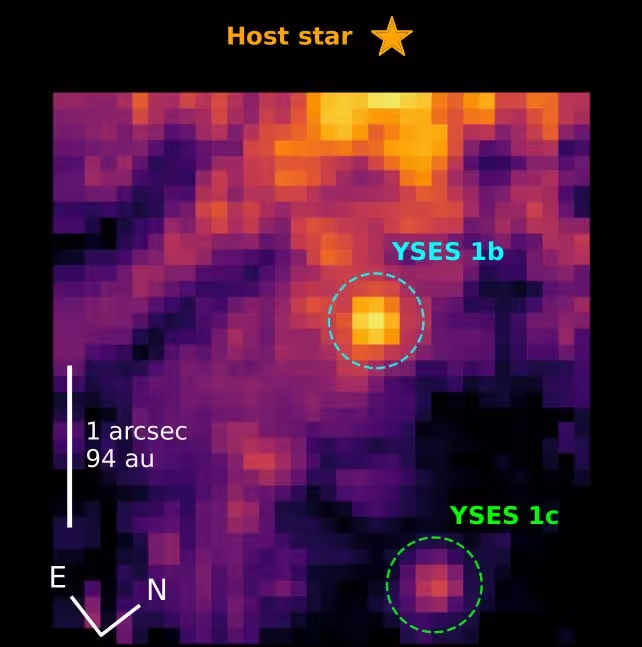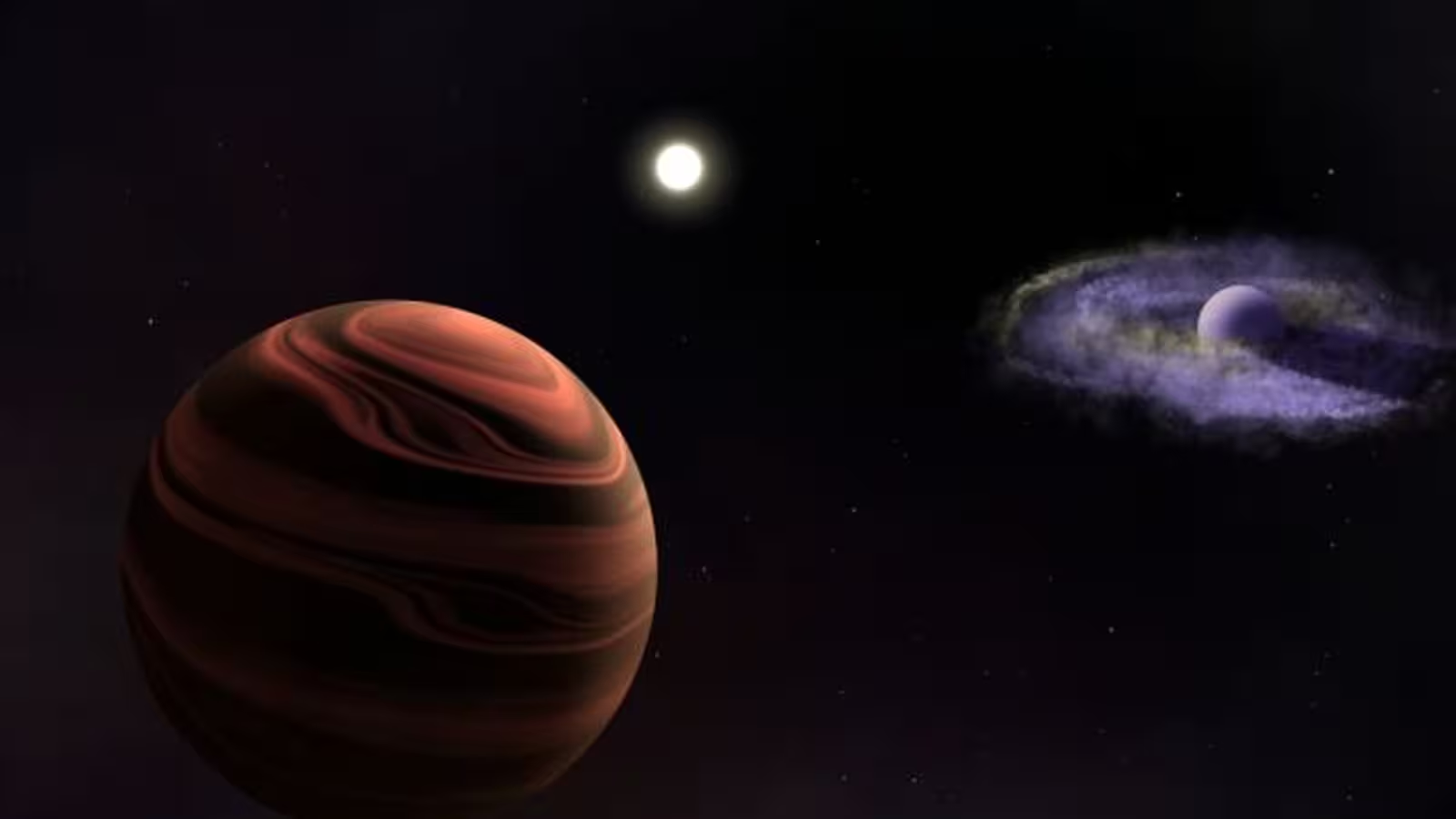6 Minutes
Exploring Alien Worlds: A New Era of Exoplanet Imaging
Thanks to the unparalleled power of the James Webb Space Telescope (JWST), astronomers are entering a new era in the direct study of exoplanets—planets orbiting stars beyond our Solar System. In a groundbreaking achievement, researchers have used JWST’s advanced instruments to capture direct images of exoplanets with enough detail to reveal atmospheric clouds composed of fine sands, as well as swirling disks of minerals such as olivine, which on Earth forms the gemstone peridot.
Scientific Context: Why Direct Exoplanet Imaging Matters
The hunt for exoplanets has become one of the most dynamic fields in modern astronomy, with nearly 6,000 worlds confirmed to date. However, almost all of these exoplanets have been detected indirectly—either by observing the subtle dimming of their host stars as planets cross in front (transits), or by measuring the gravitational "wobble" that planets induce on their stars. Direct observations, in which light from the actual planet is captured and analyzed, remain extraordinarily rare and technically demanding. In fact, out of all known exoplanets, only about 80 have been imaged directly because they are faint, small, and lost in their star’s intense glare.
Direct imaging provides a wealth of information that indirect methods cannot, allowing scientists to decode the composition, weather patterns, and physical processes occurring in alien atmospheres.

The YSES-1 System: Unlocking Hidden Planetary Mysteries
The focus of this recent JWST study is the YSES-1 star system, located 306 light-years from Earth. YSES-1 is a young star orbited by two gas giant exoplanets: YSES-1b, which sits at a distance of 160 astronomical units (AU) from the star, and YSES-1c, at 320 AU. For comparison, Neptune orbits our Sun at just 30 AU. These planets are not only far from their star but also massive—YSES-1c boasts roughly six times the mass of Jupiter, while YSES-1b tips the scales at about 14 times Jupiter’s mass, bordering the category of brown dwarfs.
Early attempts to observe the YSES-1 planets hinted at intriguing atmospheric features, but instruments lacked the resolution to fully analyze them. The arrival of JWST’s NIRSpec (Near Infrared Spectrograph) radically changed that. As astrophysicist and lead researcher Kielan Hoch from the Space Telescope Science Institute explained, "With the NIRSpec instrument on JWST, we can capture images of planets at thousands of wavelengths at once and derive spectra—essentially, the planet’s own thermal light."
How JWST Sheds Light on Exoplanet Atmospheres
By breaking apart the light passing through an exoplanet's atmosphere, astronomers can identify which molecules are present. Each chemical absorbs specific wavelengths, creating a unique spectral fingerprint. According to Hoch, "As starlight travels through a planet’s atmosphere, molecules absorb parts of it, causing characteristic dips in the planet's brightness at certain wavelengths. This lets us deduce the atmosphere’s composition."
Breakthrough Discoveries: Silicate Clouds and Olivine Rings
The JWST observations delivered the most detailed spectral dataset to date for a multi-planet system orbiting a distant star. The data revealed that both YSES-1b and YSES-1c have atmospheres rich in water vapor, carbon monoxide, carbon dioxide, and methane—common components in planetary atmospheres. Yet, deeper analysis highlighted remarkable differences between the two worlds.
Sand Clouds on YSES-1c
The spectrum of YSES-1c displayed broad molecular features from water, carbon dioxide, carbon monoxide, and methane. More surprisingly, at longer wavelengths, scientists observed absorption patterns consistent with silicate particles—essentially, tiny grains of sand—high in the atmosphere. Laboratory models suggest that these silicates may also contain small amounts of iron, which could precipitate out as "rain" from the clouds. "We used laboratory data to match silicate compounds and assess other particle properties. Some combinations suggest small silicate grains, possibly mixed with iron—yet even pure silicates could explain our results," said Hoch.

An Unexpected Olivine Disk Around YSES-1b
While YSES-1b lacked silicate signals in its atmosphere, it revealed something even more extraordinary: a spectral signature of fine grains of olivine forming a disk-like structure around the planet. Olivine is a volcanic mineral common on Earth and present in meteorites. Its presence as dust around an exoplanet is unexpected, since such material typically settles out within about 5 million years. The YSES-1 system, estimated at 16.7 million years old, suggests the olivine could be debris from a recent cosmic collision—a fleeting event caught by JWST at just the right moment.
Hoch commented, "We hoped to find clouds in YSES-1c, as its atmospheric type is known to be cloudy. But the observed features were unlike anything seen in brown dwarfs. And we did NOT expect evidence of a disk around YSES-1b. That was a real surprise."
Scientific Impact and Future Exploration
These discoveries not only provide the most detailed look yet at alien planetary weather and chemistry, but they also raise challenging new questions. For example, what processes drive the formation and persistence of silicate clouds and olivine dust in these extreme environments? How common are such features among gas giant exoplanets?
The YSES-1 system is quickly becoming a vital laboratory for exoplanet science, illustrating how cutting-edge telescopes like JWST can unravel the layered complexities of distant planetary systems.
"All breakthroughs in astrophysics generate as many questions as they resolve. The disk around YSES-1b is a case in point," noted Hoch. "We’re just beginning to understand atmospheric evolution and formation in these environments. Ongoing observations across a wide range of exoplanetary systems will help us close these knowledge gaps."
In addition, this project stands as a testament to the contributions of early-career researchers. Hoch explained, "This research was led by young scientists—when I proposed imaging YSES-1 with JWST, I was a graduate student and the telescope hadn't even launched. The lead authors include first-year graduate students and postdocs. Their success highlights why it’s so vital to invest in emerging talent in astrophysics."
Conclusion
JWST's direct imaging of the YSES-1 system marks a transformative step in exoplanet research. With the detection of atmospheric sand clouds and a mineral-rich disk, astronomers are for the first time able to probe the dynamic weather, chemistry, and even cosmic accidents that shape the skies of worlds beyond our own. As JWST continues to survey the cosmos, each new dataset promises to deepen our understanding—and spark new questions—about the diversity and complexity of planets across the galaxy.
Source: doi



Comments